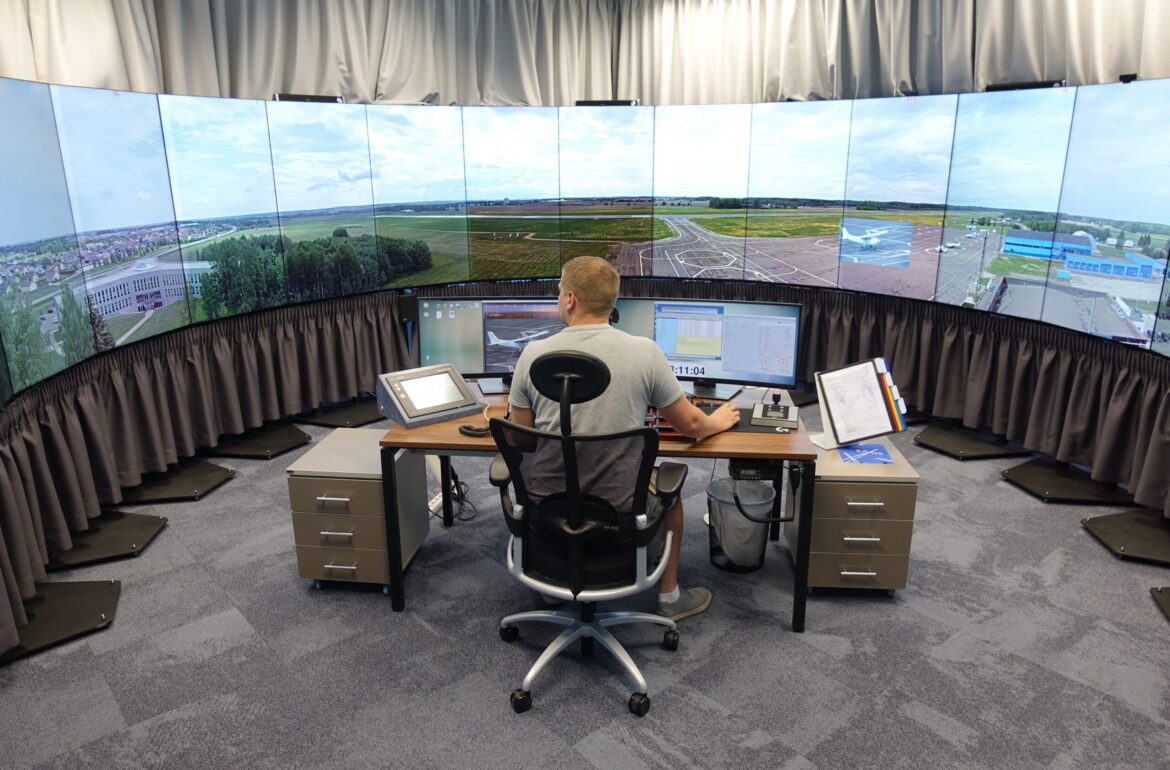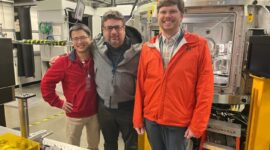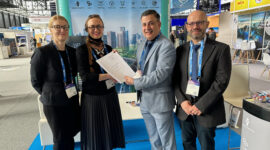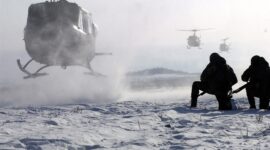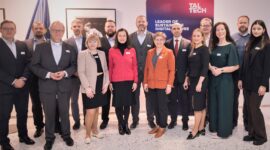The objective of air traffic control is to prevent collisions between aircraft in the air, on the maneuvering area of an aerodrome, and to expedite and maintain an orderly flow of traffic at the same time.
There are different air traffic control units to reach the objective, and to assure a safe service during an entire flight from departure until landing at a destination aerodrome. One of the units is an aerodrome control tower having its area of responsibility in the vicinity of an aerodrome and also on ground including runways and taxiways. A specific feature of this unit is that the controlling of traffic is based on a direct visual contact.
Today, there are two aerodrome control towers in Estonia operated by Estonian Air Navigation Services (EANS) – in Tallinn and in Tartu. At regional aerodromes in Kuressaare, Kärdla and Pärnu, an aerodrome flight information service is provided instead of aerodrome control. There are differences in responsibility, but one of the cornerstones for providing services is exactly the same – direct visual contact with traffic and area of responsibility.
Estonia has set the goal that the provision of air traffic services at all aerodromes in Estonia should be the responsibility of EANS, and to reach this objective, one functional prerequisite is the availability of remote tower facilities. This enables to create a remote tower center (RTC) which will enable a central and flexible provision of air traffic services including an option that one person can provide service simultaneously to more than one aerodrome at the same time, explained, the development specialist at Estonian Aviation Academy, Tanel Kulbas.
Vice Rector for development, Karl-Erik Seegel, at Estonian Aviation Academy said that this center could help to prevent the lack of air traffic controllers and, at the same time, it would give enough work to all controllers. In this field, Norway and Sweden are good role models, he said, as there are small airports controlled via remote tower.
Not a Direct Visual Contact Anymore
“In the case of the remote tower, the services are provided remotely and visual presentation of the area of responsibility is received via cameras located at the aerodromes, transferred via fiber optic cables and presented on a panoramic screen at a working position called a remote tower module”, explained the specialist in the development department, Teele Kohv, at Estonian Air Navigation Services.
She added that the visual reproduction can be overlaid with information from additional sources like surveillance equipment and infrared cameras, so the visual reproduction will be enhanced with the help of different technical solutions to support situational awareness in case of different light and visibility conditions. The technology shall be designed in a way that there will be no need for major changes in operational working methods of air traffic services personnel.
The first step in the development of remote tower technology is the design and building of a remote tower prototype for Tartu aerodrome by “shadowing” the whole conventional tower equipment, except the out-of-the-window view that is now replaced with visual reproduction. The remote tower prototype module is located on the ground floor of the Tartu airport building.
The main co-operation partner concerning the development of video presentation and other technical issues is Cybernetica AS, which has extensive experience in developing surveillance solutions for vessel traffic services and video monitoring for port operations.
Validation, Testing and Trial Programme
Kulbas noted that the first of the two main tasks for Estonian Aviation Academy is the support during the validation of remote tower system related to human factors and the acceptance of the new working position of the remote tower module. The second task is the testing of multiple remote tower operations to find out the solutions and possible limitations in case one person is providing air traffic services to Tartu and Kuressaare aerodromes at the same time.
“Based on the knowledge and experience received from the aerodrome control tower simulator, the suggestions for the changes in working arrangements and procedures will be issued”, he said.
For the EAVA, the work started in 2017 with a background study of all four regional airports. This study contains recommendations for the possible transition and for operational and technical changes considered essential by air traffic services personnel. During the same year, the preparations started for passive shadow mode operations.
The shadow mode trial (SMT) programme was prepared together with the assessment methodology and tools. The objective of passive SMT was to familiarize with the remote tower working position, its technical functions and to assess the quality of these functions and visual information, to find out all possible deficiencies for improving the remote tower working position to the stage that it allows to start with active SMT, Kulbas explained.
The passive SMT was carried out during January and February 2018. The conclusions of the passive SMT showed that the remote tower system was at the stage that continuation with active shadow mode operations was possible. An active shadow mode operation started in October this year.
Ready For All Scenarios
The aim of active SMT is to provide an air traffic control service from a remote tower working position with monitoring from a conventional tower to all listed traffic during all listed circumstances, and to find out all possible deficiencies and differences from conventional tower operations to enhance operational procedures and to make technical improvements to the extent that allows the Estonian Civil Aviation Administration to certify the remote tower system and the provision of air traffic services from a remote tower working position. For evaluating the process and results of active SMT the methodology was improved considering the experience from passive shadow mode trials, as well as the character of the active trials.
The detailed preparation of simulations will start during November 2018. The main task is to prepare the working position for the simulations, to create realistic and comprehensive scenarios for simulations and to prepare assessment methodology and tools.
Seegel said that some questions need to be answered during the development: what if the cameras are full of snow? What if two planes want to land at the same time to different controlled airports? What if the connection is disturbed?
“The simulation part of the work is relatively unique and critical for future decisions. In Europe, similar simulations have been carried out, but there is always a significant difference as aerodromes, their procedures and traffic are different as well as the working methods and experience of personnel involved. This practical research should give a realistic basis on which the conditions and procedures for working in a multi aerodrome environment shall be developed in Estonia”, said Kulbas. Kohv added that the results of the research shall also provide the basis for local approval of multi aerodrome operations when providing air traffic services.
The development process has been successful so far but there are still a lot of challenges ahead, Kulbas concluded. He explained that the main benefits of a remote tower system and center in the case of their thorough and successful development will be provision of cost efficient air traffic services, optimizing the use of personnel and infrastructure resources, improving flight safety by using new technology and increasing flexibility when providing air traffic services at regional aerodromes. Also, unexpected events can be handled in a more efficient and reliable manner, if all the questions are answered, and all scenarios are provided with exact plans.
Written by Marii Kangur, Estonian Public Broadcasting radionews reporter
This article was funded by the European Regional Development Fund through Estonian Research Council.
 Back
Back